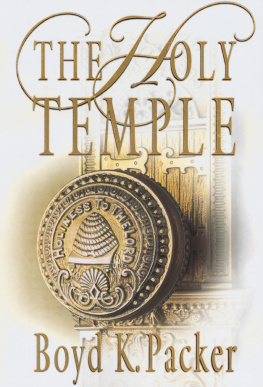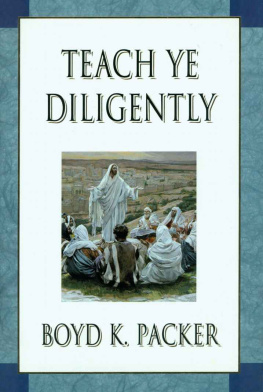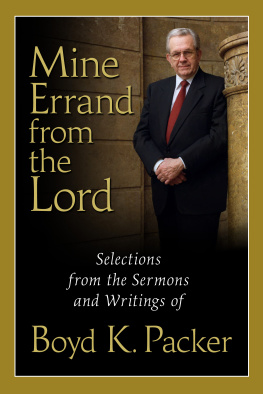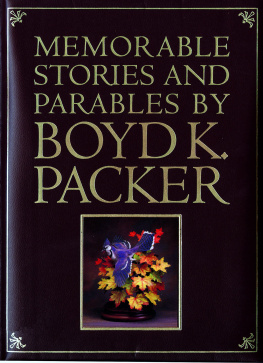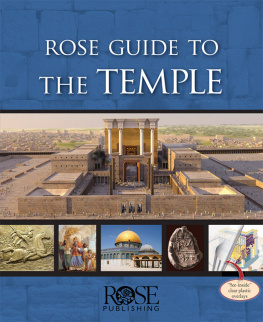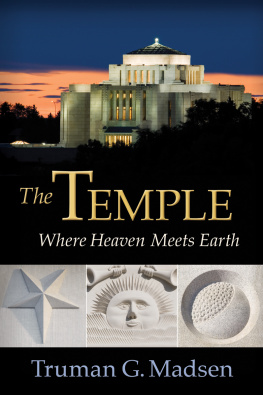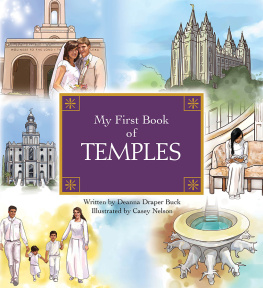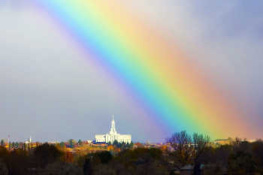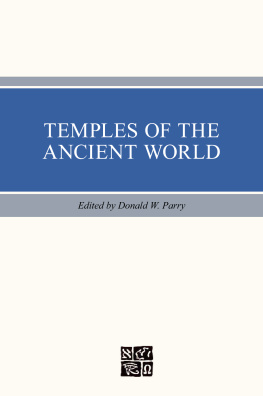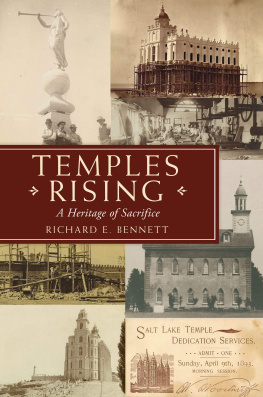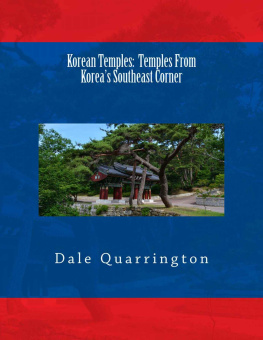The Holy Temple
Boyd K. Packer
1980 Deseret Book Company.
All rights reserved. No part of this book may be reproduced in any form or by any means without permission in writing from the publisher, Deseret Book Company (permissions@deseretbook.com), P.O. Box 30178, Salt Lake City Utah 84130. This work is not an official publication of The Church of Jesus Christ of Latter-day Saints. The views expressed herein are the responsibility of the author and do not necessarily represent the position of the Church or of Deseret Book. Deseret Book is a registered trademark of Deseret Book Company.
Acknowledgments
Many have helped with this work. None is more appreciated than Roy W. Doxey. His fine scholarship, his lifelong interest in the subject of temples, and his deep spiritual insight have made him a valuable counselor. To him and to the many others not listed here I express my thanks.
Introduction
We approach the subject of the temples with deep reverence. The Lord told Moses from the burning bush, "Put off thy shoes from off thy feet, for the place whereon thou standest is holy ground." (Exodus 3:5.) Joshua also was bidden to "loose thy shoe from off thy foot; for the place whereon thou standest is holy." (Joshua 5:15.)
Perhaps it was not so much the ground itself as it was the nature of the interview that sanctified it. We know of places dedicated for such sacred purposes-the holy temples of The Church of Jesus Christ of Latter-day Saints. Each carries the designation, The House of The Lord. The work of the temples is transcendent in nature, its prospects so supernal that the mind of man could not have conceived it. Men could not have devised it, for it is above mortal kind. This work and the ordinances central to it came from Deity.
Therefore, as we together approach this sacred subject we will do so reverently. I will not describe the sacred ordinances and ceremonies of the temple in more detail than has previously been published by the Church. I desire rather to bring together those thoughts and concepts that will help you understand temples and the significance they have for the salvation and exaltation of the human family.
When you accept a temple recommend from your bishop and stake president to go to the temple, either for the first time or after a hundred times or more, when you enter therein you too stand on holy ground.
PART I
Your Temple Blessings
Elijah window in the Salt Lake Temple
Behold, I will reveal unto you the Priesthood, by the hand of Elijah the prophet, before the coming of the great and dreadful day of the Lord.
And he shall plant in the hearts of the children the promises made to the fathers, and the hearts of the children shall turn to their fathers.
The seen and the unseen worlds are closely connected. One assists the other. Those who fail to partake of the privileges and blessings of temple work deprive themselves of some of the choicest gifts within the keeping of the Church.
Temple work begins with genealogy.
(John A. Widtsoe)
Note
(Words spoken by Moroni, the angel, to Joseph Smith the Prophet, while in his father's house at Manchester, New York, on the evening of September 21, 1823.)
Come to the Temple
If one of the temples might be singled out as being somewhat different from the rest it would be the Salt Lake Temple at the headquarters of the Church. Here are the council rooms of the First Presidency and the Quorum of the Twelve Apostles and of the First Quorum of the Seventy. Here each week the Brethren assemble to sit in council. First the Quorum of the Twelve Apostles meets; later in the morning the First Presidency arrives and the Council of the First Presidency and the Quorum of the Twelve Apostles is convened. Here the Brethren wrestle with the weighty matters of the kingdom of God upon the earth, for its management is upon their shoulders. Here, dressed in the proper way for temple ordinance work, they approach the altar in the true order of prayer to seek divine guidance and inspiration as they consider these matters. The Presidents of the Seventy meet in their council room as well.
Hidden away in the central part of the temple is the Holy of Holies, where the President of the Church may retire when burdened down with heavy decisions to seek an interview with Him whose Church it is. The prophet holds the keys, the spiritual keys and the very literal key to this one door in that sacred edifice.
Here on the fifth floor is the large assembly room, with the series of pulpits at each end like those constructed in the first temple at Kirtland, Ohio. Here special meetings have been held-solemn assemblies, special testimony meetings for leaders who have come on call from the Brethren. The missionaries used to be instructed here.
Here are the ordinance rooms and the sealing rooms. In some sealing rooms opposite walls are adorned with large mirrors so that one may stand near the altar and view on either side a corridor of diminishing images. It gives one the feeling of looking into infinity; into the eternities. For the images in that corridor never end. You can see as far as you can see, and you have the feeling that if you could move to the limit of your vision you yet could see on "forever."
And below the level of the gardens and streets that surround the temple is the baptismal font, where vicarious baptisms for the dead are performed, with young people acting as proxy for those who have gone beyond the veil.
As you move from room to room and set your hand to turn the knob you find that pioneer craftsmen have carefully fashioned the design of the latch and lock. The tribute "Holiness to the Lord" is engraved in circular fashion on each knob. When you enter this or any dedicated temple you are in the house of the Lord.
Jesus Christ Directs His Servants
Central to the message about temples is the fact that Jesus is the Christ, the Son of God, the Only Begotten of the Father; that He lives; that He directs His servants upon this earth. It is His priesthood which has been restored, defined as the Holy Priesthood after the Order of the Son of God. (See D&C 107:2-4.) Before the foundation of the earth He was chosen. That event is dramatically portrayed by Elder Orson F. Whitney of the Quorum of the Twelve Apostles. Let me quote from "Elect of Elohim."
In solemn council sat the Gods;
From Kolob's height supreme,
Celestial light blazed forth afar
O'er countless kokaubeam.
And faintest tinge, the fiery fringe
Of that resplendent day,
Lumined the dark abysmal realm
Where Earth in chaos lay.
...................
"Father? the voice like music fell,
Clear as the murmuring flow
Of mountain streamlet trickling down
From heights of virgin snow,
"Father," it said, "since One must die,
Thy children to redeem
From worlds all formless now and void,
Where myriad life shall teem;
"And mighty Michael foremost fall
That mortal man may be;
And chosen Savior yet must send,
Lo, here am I-send me!
I ask, I seek no recompense,
Save that which then were mine;
Mine be the willing sacrifice,
The endless glory Thine!"
....................
Still rang that voice, when sudden rose
Aloft a towering Form,
Proudly erect as lowering peak
Lumed by the gathering storm;
A presence bright and beautiful,
With eye of flashing fire,
A lip whose haughty curl bespoke
A sense of inward ire.
"Send me!"coiled 'neath his courtly smile

